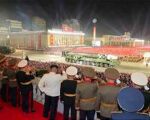Spain’s INDRA Group has secured a series of new contracts from the European Space Agency (ESA) aimed at significantly enhancing Europe’s space surveillance and tracking (SST) capabilities. These awards support the development of next-generation radar sensors and data fusion systems critical for monitoring orbital debris, satellites, and potential threats in Earth orbit.
Strategic Role in European Space Surveillance
INDRA has long been a key player in the European Union’s Space Surveillance and Tracking (EU SST) initiative—a program designed to safeguard European space assets by detecting, cataloging, and predicting the trajectories of objects in low Earth orbit (LEO), medium Earth orbit (MEO), and geostationary orbit (GEO). The latest ESA contracts reinforce INDRA’s role as a prime industrial contributor to this strategic domain.
The new projects fall under ESA’s Space Safety Programme (S2P), which is closely aligned with EU SST objectives. INDRA will lead several work packages focused on sensor development, data processing algorithms, system integration, and operational validation. These efforts are part of a broader push by Europe to establish autonomous capabilities in space situational awareness (SSA), reducing reliance on U.S. military-provided data from systems like the U.S. Space Surveillance Network (SSN).
Advanced Radar Sensor Development
A centerpiece of INDRA’s contribution is the development of next-generation radar systems capable of detecting small debris objects—down to 5–10 cm in LEO—with high revisit rates. According to company statements and ESA documentation reviewed by MiliVox Editorial Engine, one focus area is an evolution of Spain’s S3TSR radar system currently operated near Madrid. This phased-array radar can track multiple targets simultaneously using electronically steered beams.
Under the new contracts, INDRA will prototype enhancements including:
- Increased detection sensitivity through improved signal processing chains
- Higher angular resolution via expanded antenna arrays
- Real-time data fusion with optical sensors for enhanced object characterization
- Integration with AI-driven prediction models for collision avoidance support
This radar modernization aligns with broader EU goals under Horizon Europe and Copernicus programs that aim to bolster dual-use technologies for both civilian satellite safety and defense-related space domain awareness.
Data Fusion Architecture & SSA Software Tools
Beyond hardware upgrades, INDRA is tasked with developing advanced software tools that can ingest multi-sensor data—including radar tracks, optical telescope observations, GNSS telemetry spoofing alerts—and fuse them into actionable SSA products. These include conjunction warnings (COLA), re-entry predictions for deorbiting spacecraft or debris clouds, and anomaly detection linked to potential anti-satellite activity or uncoordinated maneuvers.
The software architecture will be modular and scalable across national SST nodes within the EU SST framework. This supports interoperability between member states such as France (GRAVES system), Germany (TIRA radar), Italy (ASTRI optical network), and Spain’s own assets managed by INTA under national coordination authority CDE.
Tactical Implications for Military Space Operations
While officially framed as a civil safety initiative under ESA oversight, the dual-use nature of these technologies has clear military relevance. Enhanced SSA capabilities allow European defense planners to:
- Monitor adversarial satellite behavior near critical assets like Galileo GNSS or military relay satellites
- Detect potential threats from co-orbital inspection or rendezvous-capable spacecraft
- Support NATO operations through shared situational awareness layers integrated into C4ISR frameworks
- Provide early warning against kinetic ASAT tests or debris-generating events like Russia’s COSMOS-1408 incident in 2021
This aligns with recent declarations from the EU Council on strengthening strategic autonomy in space defense domains—especially amid rising tensions involving China’s Shijian-series satellites or Russia’s Luch-Olimp class platforms suspected of proximity operations near Western spacecraft.
Sustained Investment Through Horizon Europe & Beyond
The funding behind these contracts stems from multiple sources including ESA’s General Support Technology Programme (GSTP) and co-financing via Horizon Europe Pillar II clusters related to digital infrastructure resilience. While exact contract values remain undisclosed due to commercial confidentiality clauses, industry analysts estimate INDRA’s total award package exceeds €20 million across several tranches through 2026.
This investment ensures continuity from earlier milestones such as:
- The deployment of Spain’s S3TSR demonstrator in 2018–2020 period under H2020 funding calls
- The operationalization of EU SST Front Desk services hosted by SatCen since July 2016
- The integration roadmap toward a pan-European catalogue interoperable with U.S., Canadian & Japanese tracking networks via IADC protocols
Outlook: Toward Autonomous European SSA Posture
The latest round of ESA-backed contracts awarded to INDRA marks a significant step toward an autonomous European capability in space surveillance—a domain increasingly viewed as critical infrastructure akin to air traffic control or cybersecurity. As orbital congestion intensifies—with over 30,000 tracked objects currently catalogued—the need for sovereign SSA tools becomes ever more urgent.
If successfully executed by INDRA over the next two years, these projects could position Spain as a core node within Europe’s future military-civilian hybrid space architecture—supporting both peaceful satellite operations and strategic deterrence postures against hostile actions in orbit.









